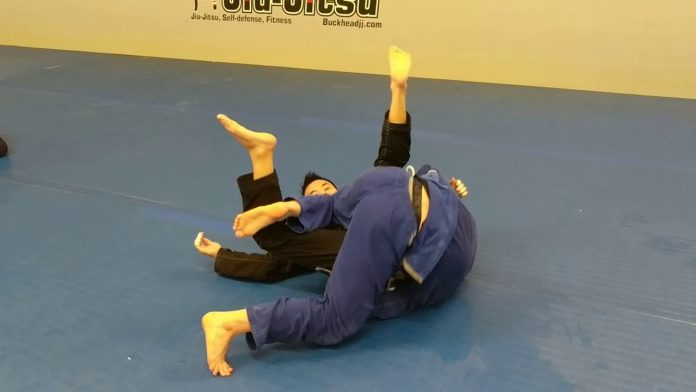
What I really love about BJJ is how much you can add to it from other grappling martial arts. There’s a goldmine in other arts such as Judo, Sambo, wrestling, etc that we’ve barely tapped in as Jiu-Jitsu practitioners. Some of the moves those arts offer are already a huge part of BJJ, whether they are just borrowed or modified. However, there are also moves that we do not explore, due to reasons we’ll look int later. The fact is, there are some grappling fundamentals form other arts that can really give your BJJ game a boost. One such technique is wrestling’s Crab Ride, the forefather of the BJJ Berimbolo.
Grappling martial arts do have a lot to teach us. The older the art is, the more hidden gems it contains. Given that wrestling is arguably the oldest grappling martial art ever, it’s easy to see how much-untapped potential it holds for grapplers. So far, we’re very keen on using wrestling takedowns on a regular basis. Although not as often, we also use some less known techniques, like the wrestler’s guillotine AKA the Twister. However, there’s one move that western wrestlers really rely upon, and it’s not about takedowns. It is a transitional move that helps with pinning. The Crab Ride is one of those grappling fundamentals that the potential to work in any grappling martial art. And it is a particularly good fit for BJJ.
The Power Of Grappling Fundamentals
Regardless of the martial art, some grappling fundamentals easily transcend the borders between different arts. Whether you go for an armbar in Sambo, Judo or BJJ, you’re still bound by the same mechanics. the same holds true for foot sweeps, chokes, etc. However, there area also grappling fundamentals that involve movement rather than a specific goal. They have the task of providing control and opening other options. The control part is what is valuable to all martial arts. The opening will vary depending on the art and goal at hand.
A perfect example of the above is the Crab Ride. Originally form freestyle wrestling, this position is a simple transitional move that offers a huge amount of control. The move utilizes foot hooks, something we take for granted in Brazilian Jiu-Jitsu. In the case of the Crab Ride, one hook goes under the opponent’s ankle. The other hook can be out, or, more often, at the level of the knee on the same or opposite side leg.
The power of the Crab Ride is in the indirect control that it provides over the opponent’s hips. Controlling both legs with both the hooks and sometimes your grips mean you can take your opponent into virtually any direction. it also means you can prevent them from moving if that is your goal. As fundamental and simple as it sounds, this move is actually the foundation of modern BJJ techniques like the Berimbolo, Baby Bolo, etc.
The Original Crab Ride
We all know that wrestling, in a nutshell, is about your opponent to the ground, and keeping them there, pinned. In most cases, once the match ends up on the ground, wrestlers will do anything to keep their backs off the ground. A position that they often end up in is the “all-fours”, or more commonly known as the referee’s position. This is where the Crab Ride can really make a difference.
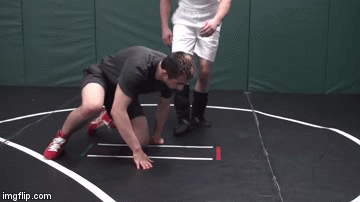
Getting the Crab Ride provides the attacker with the option of controlling the legs and hips and getting the opponent all the way to the mats. There are plenty of different options that wrestler can do from this ride. Usually, the goal is to get upper body control against someone in the referee’s position an use that to force them to turn. This opens up the Crab ride, that, via the elevation that he hooks provide, allows wrestlers to get the opponent’s shoulders to the ground and hold them there for as long as it takes.
Modern BJJ Crab Ride Applications
In BJJ the Crab Ride actually has many more applications than in wrestling. Due to the nature of BJJ, transitional moves such as this are really useful at all levels. Some of the most prominent BJJ fighters to use the crab ride are Caio Terra, the Miyao brothers, Gianni Grippo, Marcelo Garica, and many others.
Crab riding in BJJ can be done from a variety of positions. Give the position’s basic mechanic, you can see how close it is to back control. Conversely, transitioning in and out of back mount is really easy. Against a standing opponent, a whole new world of opportunities opens, by way of Berimbolos. The Crab Ride is also useful to break down the turtle, enter the 50/50 guard or even hunt for heel hooks. There’s even a great way to use it from standing and both get the fight to the ground and get a finishing position with just one move.
Back Attacks
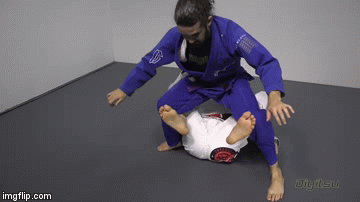

Gianni Grippo is a real maverick when it comes to the Berimbolo. Naturally, he is also very well versed at the Crab Ride, particularly from the De la Riva. Check out his take on riding your way to the back in his “All About The Bolo” DVD instructional.
Inside Heel Hook
A surprise contender from the Crab Ride is the heel hook, It is definitely not something people are used to, and it is a real black belt killer move. In this instance, the ride is from the front, although the mechanics are much the same. In case of a double guard pull, this is a great way to finish fast.
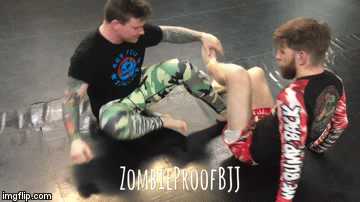
Crab Ride From The De La Riva
The De La Riva guard is another position that works perfectly with the Crab Ride. It is actually down to this ride that the De La Riva became the launching pad for the Berimbolo. It works both against standing and kneeling opponents, but it’s much better when the opponent is kneeling.
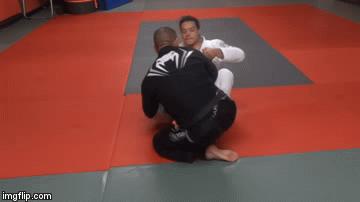
Turtle Position Crab Ride Pass
A very cool variation of the Crab Ride for BJJ comes from the top turtle position. In this case, you start off just like with any turtle attack, with one arm around the opponent’s waist. The goal is to secure a grip on their Gi so you have an anchor for the ride.
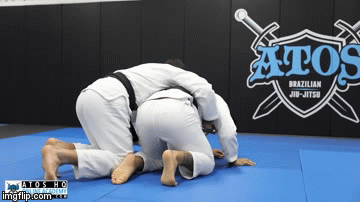
Standing Bodylock Crab Ride
This is a real Marcelo Garcia special. The Crab Ride can also tie in well with takedowns, particularly those that get you behind the opponent. A simple option is to get into the ride straight from the body lock from standing.

Conclusion
All in all, using grappling fundamentals from one art in another is usually a good idea. AS long as you stick with real foundational, high-p[ercentage moves, you’ll be able to use them under any grappling setting. Although often used in BJJ, the Crab Ride does have its roots in wrestling. Therefore, it is prudent to turn to wrestle to learn the details and mechanics of the move. Then, it’ll not only work in BJJ, but it’ll work against all kinds of different opponents.
https://bjj-world.com/boston-crab-submission-mma-fight-unbelievable/


![Darce Choke Encyclopedia – Origins, Mechanics and Variations [2025] BJJ, choke, Brabo, BJJ Darce Choke, D'arce Choke, Darce BJJ Choke](https://bjj-world.com/wp-content/uploads/2017/11/JungPoirierLeeYahoo-218x150.jpg)









![Countering with Crab Ride Anthony Budion DVD Review [2025] Countering with Crab Ride Anthony Budion DVD Review](https://bjj-world.com/wp-content/uploads/2025/03/countering-with-crab-ride-anthony-budion-dvd-review-218x150.png)
![Closet Closed Guard Craig Jones DVD Review [2025] Closet Closed Guard Craig Jones DVD Review](https://bjj-world.com/wp-content/uploads/2025/03/closet-closed-guard-craig-jones-dvd-review-218x150.png)
![Xanadu Back Takes Levi Jones-Leary DVD Review [2025] Xanadu Back Takes Levi Jones-Leary DVD Review](https://bjj-world.com/wp-content/uploads/2025/03/xanadu-back-takes-levi-jones-leary-dvd-review-218x150.png)

![No-Gi Grapplers Guide To Front Headlock Joel Bane DVD Review [2025] No-Gi Grapplers Guide To Front Headlock Joel Bane DVD Review](https://bjj-world.com/wp-content/uploads/2025/03/no-gi-front-headlock-joel-bane-dvd-review-218x150.png)

![Knee Lever John Wayne Sweep Adam Wardzinski DVD Review [2024] Knee Lever John Wayne Sweep Adam Wardzinski DVD Review](https://bjj-world.com/wp-content/uploads/2024/12/john-wayne-sweep-adam-wardzinski-dvd-review-324x235.png)

![Power Passing Body Locks Dan Manasoiu DVD Review [2025] Power Passing Body Locks Dan Manasoiu DVD Review](https://bjj-world.com/wp-content/uploads/2025/01/power-passing-body-locks-dan-manasoiu-dvd-review-100x70.png)

![How To Knee Cut Junny Ocasio BJJ DVD Review [2025] How To Knee Cut Junny Ocasio BJJ DVD Review](https://bjj-world.com/wp-content/uploads/2025/02/how-to-knee-cut-junny-ocasio-bjj-dvd-review-100x70.png)


![Leg Lock Entries Helena Crevar DVD Review [2025] Leg Lock Entries Helena Crevar DVD Review](https://bjj-world.com/wp-content/uploads/2025/03/leg-lock-entries-helena-crevar-dvd-review-100x70.png)
![No-Gi Grapplers Guide To Front Headlock Joel Bane DVD Review [2025] No-Gi Grapplers Guide To Front Headlock Joel Bane DVD Review](https://bjj-world.com/wp-content/uploads/2025/03/no-gi-front-headlock-joel-bane-dvd-review-100x70.png)
![Reverse De La Riva System Mikey Musumeci DVD Review [2024] Reverse De La Riva System Mikey Musumeci DVD Review](https://bjj-world.com/wp-content/uploads/2024/11/reverse-de-la-riva-system-mikey-musumeci-dvd-review-100x70.png)



![Highlight Hip Throws Christian Ozbek DVD Review [2025] Highlight Hip Throws Christian Ozbek DVD Review](https://bjj-world.com/wp-content/uploads/2025/01/highlight-hip-throws-christian-ozbek-dvd-review-100x70.png)
![Master The Move The American Lock John Danaher DVD Review [2024] Master The Move The American Lock John Danaher DVD Review](https://bjj-world.com/wp-content/uploads/2024/12/the-american-lock-john-danaher-dvd-review-100x70.png)
![Slip N Slide Into Victory Julián Espinosa DVD Review [2025] Slip N Slide Into Victory Julián Espinosa DVD Review](https://bjj-world.com/wp-content/uploads/2025/01/slip-n-slide-into-victory-julian-espinosa-dvd-review-100x70.png)
![Daisy Fresh WHITE BELT Wrestling Curriculum DVD Review [2024] Daisy Fresh WHITE BELT Wrestling Curriculum DVD Review](https://bjj-world.com/wp-content/uploads/2024/10/daisy-fresh-white-belt-wrestling-curriculum-review-100x70.png)
![Complete Fundamentals Curriculum Eliot Marshall DVD Review [2025] Complete Fundamentals Curriculum Eliot Marshall DVD Review](https://bjj-world.com/wp-content/uploads/2025/02/fundamentals-curriculum-eliot-marshall-dvd-review-100x70.png)

![Jeff Glover Deep Half Revolution DVD Bundle Review [2024] Jeff Glover Deep Half Revolution DVD Bundle Review](https://bjj-world.com/wp-content/uploads/2024/10/jeff-glover-deep-half-revolution-dvd-bundle-review-100x70.png)
![Arm Bar It All Shawn Melanson DVD Review [2025] Arm Bar It All Shawn Melanson DVD Review](https://bjj-world.com/wp-content/uploads/2025/03/arm-bar-it-all-shawn-melanson-dvd-review-100x70.png)

![Effectively Passing The Guard Luke Griffith DVD Review [2025] Effectively Passing The Guard Luke Griffith DVD Review](https://bjj-world.com/wp-content/uploads/2025/01/passing-the-guard-luke-griffith-dvd-review-100x70.png)
![Lockdown Quickstart Guide Cameron Mellott DVD Review [2025] Lockdown Quickstart Guide Cameron Mellott DVD Review](https://bjj-world.com/wp-content/uploads/2025/03/lockdown-quickstart-guide-cameron-mellott-dvd-review-100x70.png)
![No-Gi Pressure Mastery JT Torres DVD Review [2024] No-Gi Pressure Mastery JT Torres DVD Review](https://bjj-world.com/wp-content/uploads/2024/10/no-gi-pressure-mastery-jt-torres-dvd-review-100x70.png)
![Crossing and Spinning Steps To Attack Israel Hernandez DVD Review [2024] Crossing and Spinning Steps To Attack Israel Hernandez DVD Review](https://bjj-world.com/wp-content/uploads/2024/09/spinning-steps-to-attack-israel-hernandez-dvd-review-100x70.png)
![BJJ Foundations Mikey Musumeci DVD Bundle Review [2024] BJJ Foundations Mikey Musumeci DVD Bundle Review](https://bjj-world.com/wp-content/uploads/2024/09/bjj-foundations-mikey-musumeci-dvd-bundle-review-100x70.png)
![The Buchecha Gi Takedown System DVD Review [2025] The Buchecha Gi Takedown System DVD Review](https://bjj-world.com/wp-content/uploads/2025/01/buchecha-gi-takedown-system-dvd-review-100x70.png)